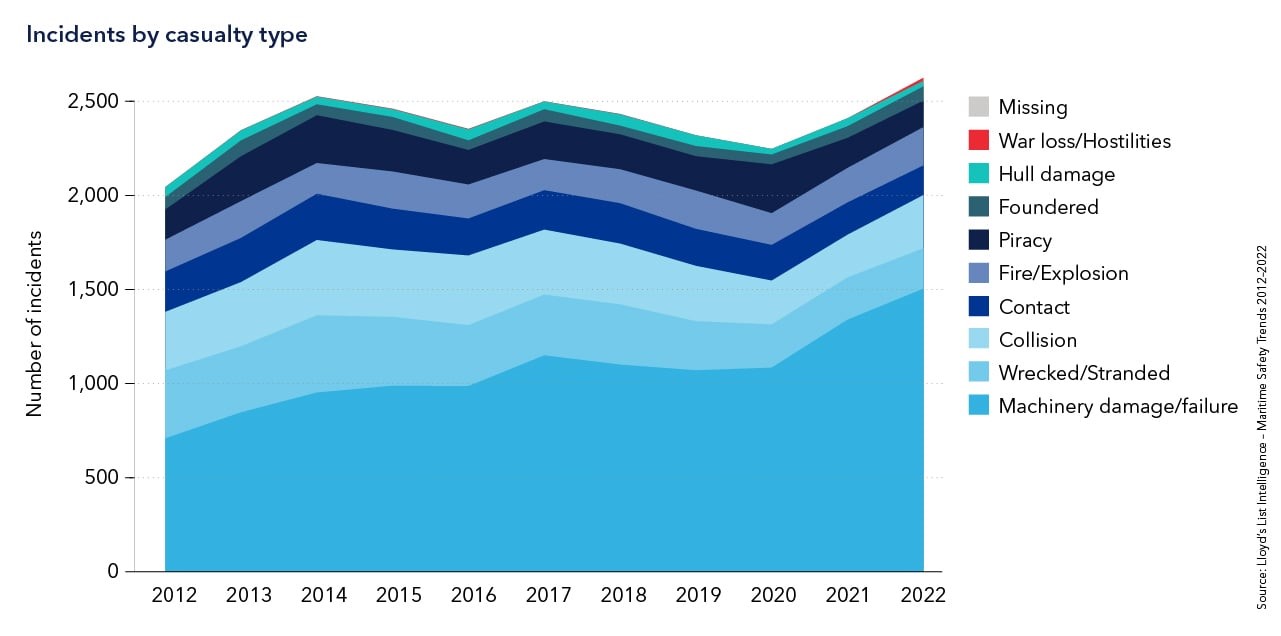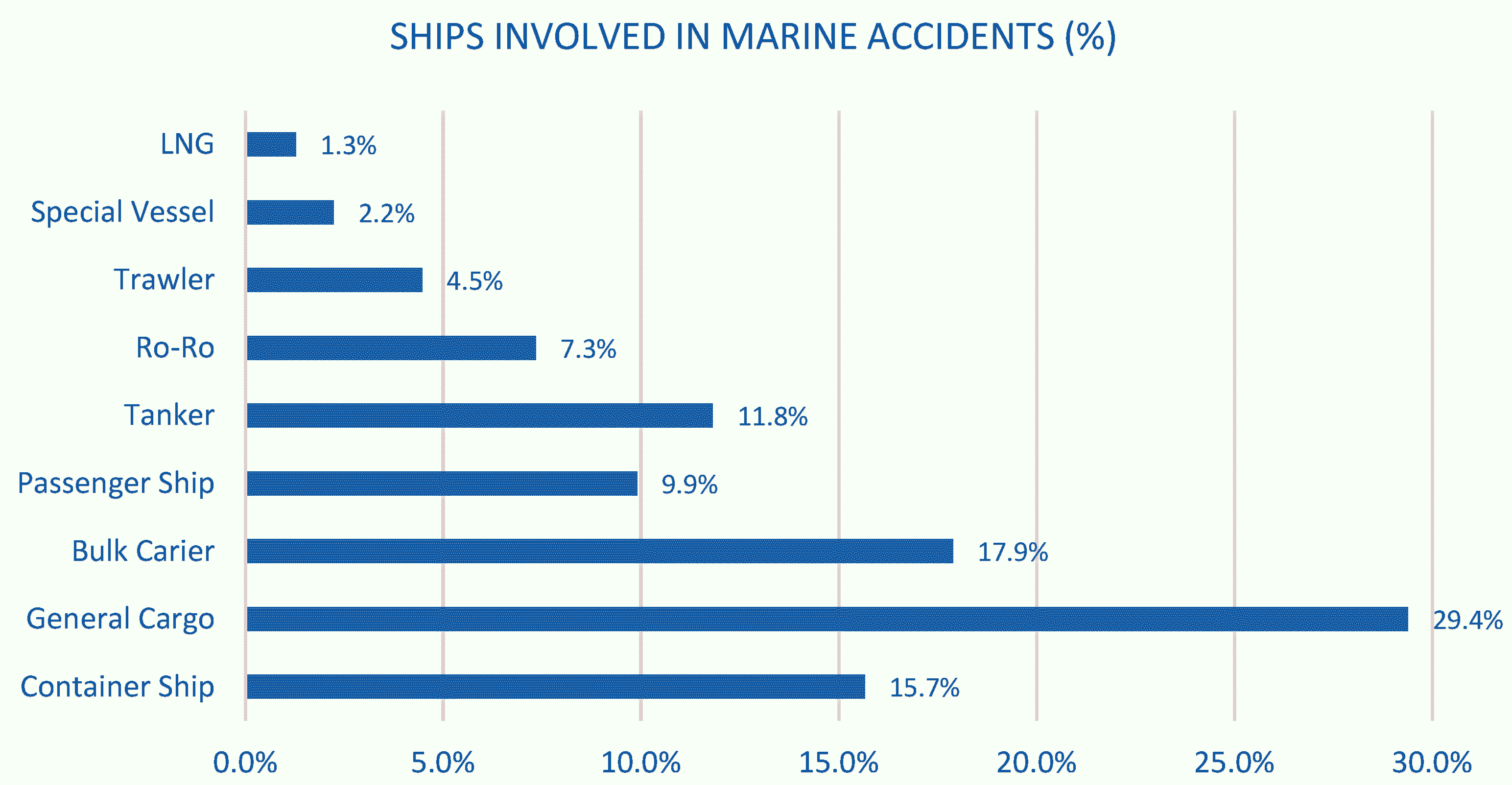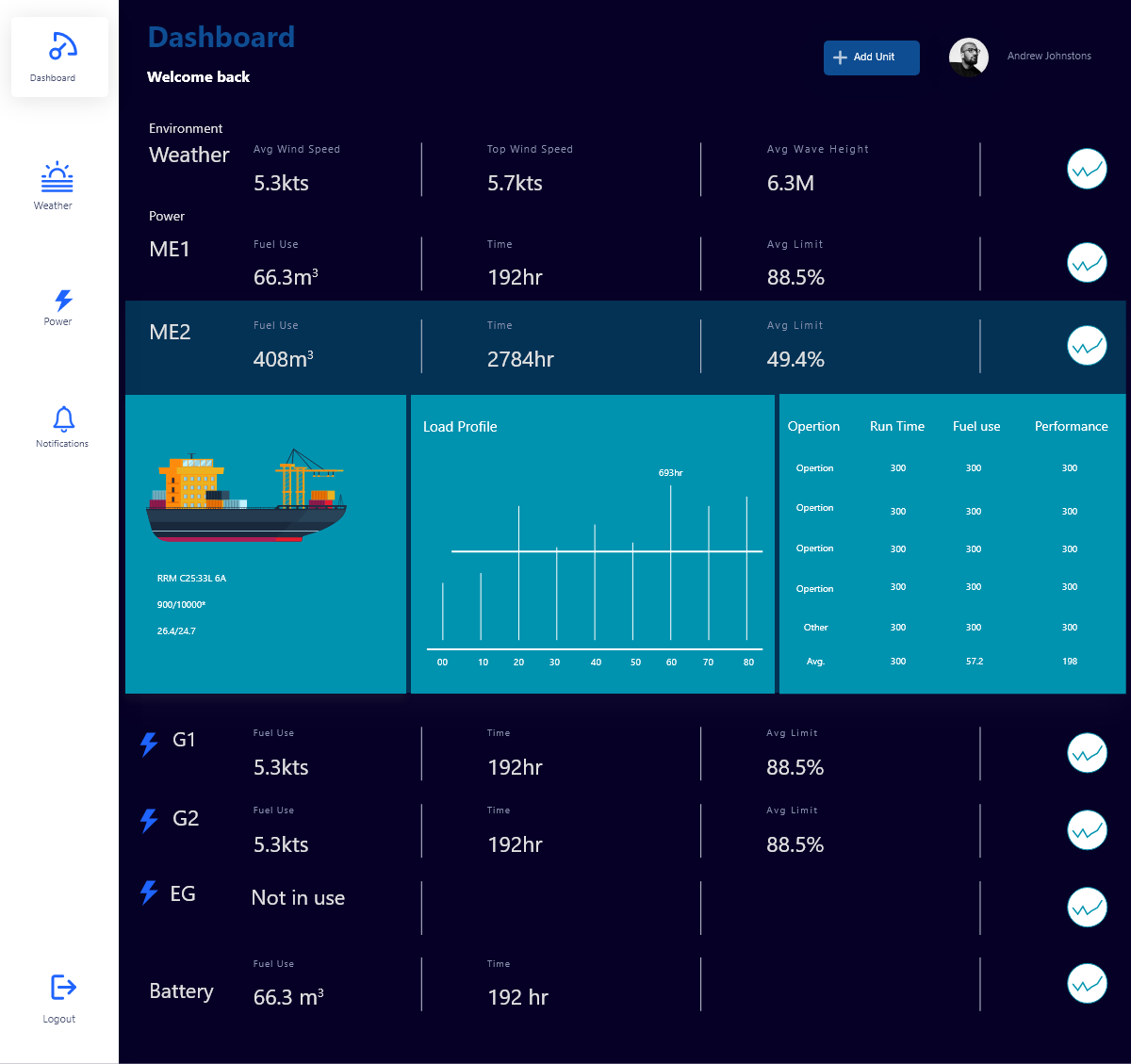Introduction
The maritime industry, a cornerstone of global trade, faces significant safety challenges amidst its vast operations. This guide introduces maritime IoT solutions as a source of innovation, aiming to elevate safety standards across the seas.

Source: DNV
The Growing Demand of IoT in Maritime Safety
Maritime IoT solutions stand at the intersection of connectivity and intelligence. By harmonizing sensors, devices, and systems, these smart maritime solutions offer a panoramic view of operations, predictive analytics, and autonomous control, ensuring a safer passage for maritime journeys.
Key Components of Maritime IoT for Safety Enhancement
- Predictive Analytics for Maintenance and Safety: Utilizing AI and IoT for predictive analytics, vessel engineers can anticipate machinery failures, drastically reducing the likelihood of accidents and operational disruptions.
- Real-Time Environmental Monitoring: Constant surveillance of maritime conditions, including weather changes and potential obstacles, allows for swift adjustments, safeguarding vessels against environmental threats.
- Seamless Ship-to-Shore Communication: Smart maritime IoT solutions support enhanced connectivity ensures critical communication pathways are always open, facilitating emergency responses and operational support.
- Automated Response Systems: In emergencies, smart maritime IoT solutions can autonomously mitigate risks, from engine shutdowns to deploying essential safety gear, preventing minor issues from escalating.
- Advanced Training Through Simulation: Leveraging real-world data, smart maritime solutions empower crews with simulation-based training, preparing them for effective emergency responses.
- Compliance Monitoring: Maritime IoT solutions monitor compliance with safety and environmental regulations in real-time, fostering a culture of accountability.
- Customizable Safety Protocols: Tailored smart maritime solutions meet the unique needs of each vessel, ensuring the deployment of the most appropriate and effective technologies.
Collision Avoidance Systems
Pioneering safety, collision avoidance systems utilize data and Automatic Identification Systems (AIS) to preemptively identify and mitigate collision risks, crucial for navigating today's busy shipping lanes.

Source: MDPI
- Integration with Navigation Solutions: Modern maritime IoT solutions support seamless integration with vessel navigation systems, including GPS and Electronic Chart Display and Information Systems (ECDIS). Such powerful remote vessel monitoring ensures enhanced route planning and maneuver avoidance.
- Machine Learning: Enhancing predictive accuracy through past incident analysis, these smart maritime solutions can learn from past incidents and improve their predictive capabilities over time.
- Collaborative Avoidance Protocols: These maritime IoT solutions can communicate potential risks to promote situational awareness, contributing to overall maritime safety.
- Autonomous Vessel Navigation: As we move towards a future of autonomous ships, these collision avoidance systems play a crucial role. These smart maritime solutions help unmanned vessels to navigate safely among manned ships.
- Real-time Traffic Management: In busy sea lanes and congested ports, these maritime IoT solutions contribute to efficient traffic management, facilitating smooth coordination of vessel movements and reducing the risk of accidents.
- Enhanced Alert Systems: These smart maritime solutions also prioritize threats and offer graded alerts to vessel or ship crew, from early warnings to collision alerts. This ensures that the crew can respond immediately in the event of a threat.
- User-friendly Interfaces: Advancements in user interfaces have made these maritime IoT solutions more accessible and user-friendly. These interactive features make crucial information readily understandable, enabling quick decision-making during critical situations.

Automated Health Monitoring for Crew
Wearable devices and environmental sensors extend a protective shield over the crew, instantly responding to health anomalies or hazardous conditions. Smart maritime solutions track all the deviations, be it health anomaly or a change in environmental conditions, and trigger immediate alerts.
- Personalized Health Alerts: Utilizing advanced algorithms, smart maritime IoT solutions can provide personalized alerts for crew members, factoring in their medical history and current health data. This ensures timely intervention tailored to individual needs.
- Stress and Fatigue Detection: Innovative maritime IoT solutions now include monitoring for signs of stress and fatigue, critical factors in maintaining operational safety. Alerts can suggest rest periods or stress-relief activities, helping to manage crew fatigue proactively.
- Remote Medical Assistance: In cases where medical expertise is required, IoT solutions can facilitate real-time consultations with onshore medical professionals. This includes the transmission of vital health data, enabling accurate diagnosis and treatment advice.
- Health Data Analytics: Aggregating health data over time provides insights into the overall well-being of the crew, identifying trends or areas of concern. This can inform improvements in living conditions, work schedules, and health protocols on board.
- Emergency Evacuation Support: In the event of an emergency requiring evacuation, health monitoring devices can track the location and medical status of crew members, ensuring that rescue efforts are accurately targeted and prioritized.
- Enhanced Privacy Protocols: As health monitoring becomes more integrated, ensuring the privacy and security of crew health data is paramount. Advanced encryption and data protection measures are employed to safeguard this sensitive information.
Environmental Hazard Detection
Strategically placed sensors detect and act against potential onboard dangers, from gas leaks to fires, ensuring the well-being of the vessel and its occupants. Maritime IoT solutions are customized to detect these risks. Upon detection, these smart maritime IoT solutions can trigger alarms, reducing risks and preventing disasters.
- Dynamic Weather Tracking: Integrating real-time weather data, maritime IoT solutions can predict and respond to sudden changes in weather conditions, adjusting navigation and operational protocols to avoid storm-related risks.
- Water Quality Monitoring: Beyond air quality, sensors can also assess water quality in real-time, detecting chemical spills or hazardous substances in the vessel's vicinity, allowing for immediate corrective actions to protect marine life and water resources.
- Advanced Fire Detection: Employing thermal imaging and smoke detection technologies, smart maritime solutions offer advanced warning of fire incidents, identifying hotspots before they develop into flames, enabling faster response times.
- Structural Integrity Analysis: Sensors monitor the vessel's structural health, identifying potential weaknesses or damages that could lead to water ingress or compromise the ship's integrity, ensuring timely maintenance and repairs.
- Gas Leak Detection: Utilizing sophisticated gas sensors, maritime IoT solutions can detect a wide range of flammable and toxic gases at very low levels, initiating ventilation, and other safety measures to prevent potential explosions or health hazards.
- Automated Safety Lockdowns: In critical situations, such as a major hazardous material spill, smart maritime solutions can automatically initiate lockdown procedures, sealing off affected areas to contain the hazard and protect the crew and cargo.
- Collaborative Incident Response: IoT platforms can automatically notify nearby ships and port authorities in the event of a detected environmental hazard, coordinating a collective response effort and leveraging shared resources for mitigation.
Takeaway
The advent of maritime IoT solutions represents a monumental leap in maritime safety. By embracing these technologies, the maritime and shipping industry can navigate towards a future where safety and efficiency merge, safeguarding not just lives and assets but the environment too.
Don't let the currents of concern dictate your journey. Equip your maritime operations with smart maritime IoT solutions that promise safety, efficiency, and peace of mind.
Connect with our IoT expert to explore how you can navigate the future of shipping with confidence.


